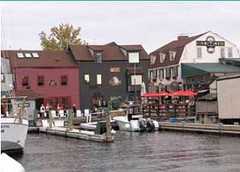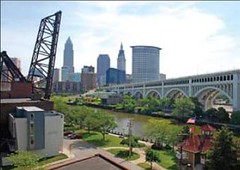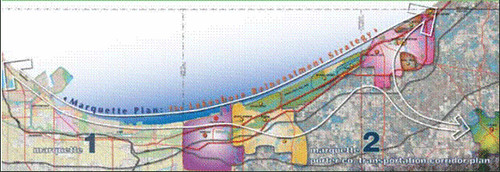NOAA launches terrific new web site and report on coastal smart growth

Posted September 14, 2009 at 1:52PM
Kudos to the National Oceanic and Atmospheric Administration for a comprehensive new report and web site on best practices for smart development in coastal and waterfront communities. The report was issued in cooperation with the federal EPA, ICMA, and Sea Grant Rhode Island.
The report's introduction explains the rationale:
"The water, beaches, cliffs, rocky shores, and other natural features attract people and spur development. But many coastal and waterfront communities have found that conventional development patterns threaten the assets they treasure most.
Smart growth approaches-guided by a set of principles that help communities grow in ways that expand economic opportunity, protect public health and the environment, and enhance places that people care about-can help these communities accommodate development while protecting their traditional sense of place. Some of these approaches also can help communities be more resilient to hazards created by weather and climate, such as drought, sea level rise, and coastal and inland flooding."
The report has taken the 10 basic principles of smart growth that have been adopted by the national Smart Growth Network of organizations, associations, and agencies (including the report's sponsors and NRDC) and adapted them to reflect the specific challenges and opportunities characterizing waterfronts.
For example, here's some of what the web site has to say regarding the principle of "tak[ing] advantage of compact community design that enhances, preserves, and provides access to waterfront resources":
"Coastal and waterfront communities have a natural boundary-the water-that makes efficient land use critical. Not only is development physically limited within this boundary, but proximity to the water is often of highest value and at greatest risk from natural hazards, requiring an approach to community and building design that provides high structural integrity and the greatest benefit on the least amount of land. Compact community design accommodates increased development in waterfront districts through higher densities and narrower streets.
Through smaller building footprints for new construction, reuse of existing buildings, and creative solutions to parking, compact building design can leave undeveloped land to absorb rainwater, thereby reducing the overall level of impervious surface in the watershed. Together, compact community and building design techniques reduce runoff, flooding, and stormwater drainage needs, contributing to better watershed health. For waterfront communities dependent on the health and beauty of neighboring waters, these outcomes are vital.
"Since compact design will still include impervious surfaces, communities are well-served by incorporating site-level green infrastructure/low impact development (LID) practices to manage stormwater runoff. Many attractive techniques are available, including rain gardens, tree boxes, and green roofs."
The site then goes into some excellent examples of good application of this advice, and they do this for the full range of principles and techniques that create smart patterns of sustainable development in our coastal areas. Its creators did a fabulous job. If you want the full report, go here.


